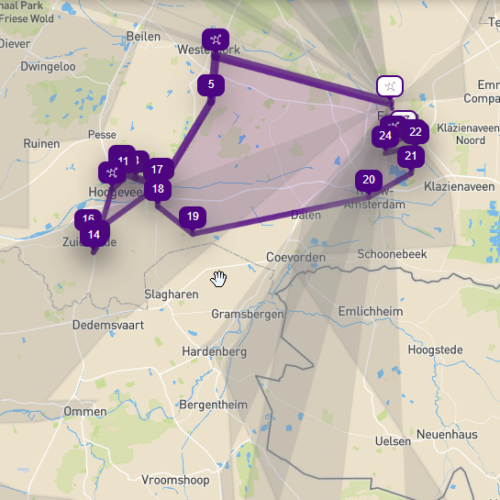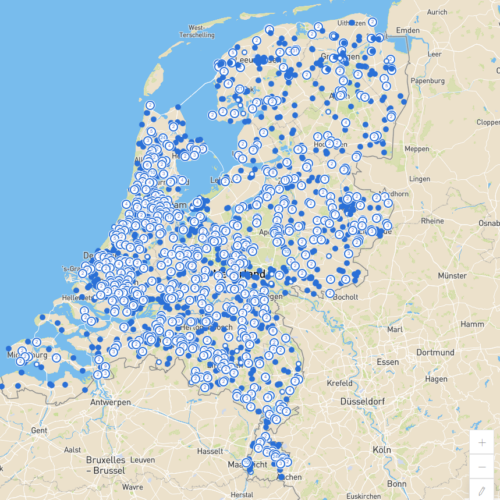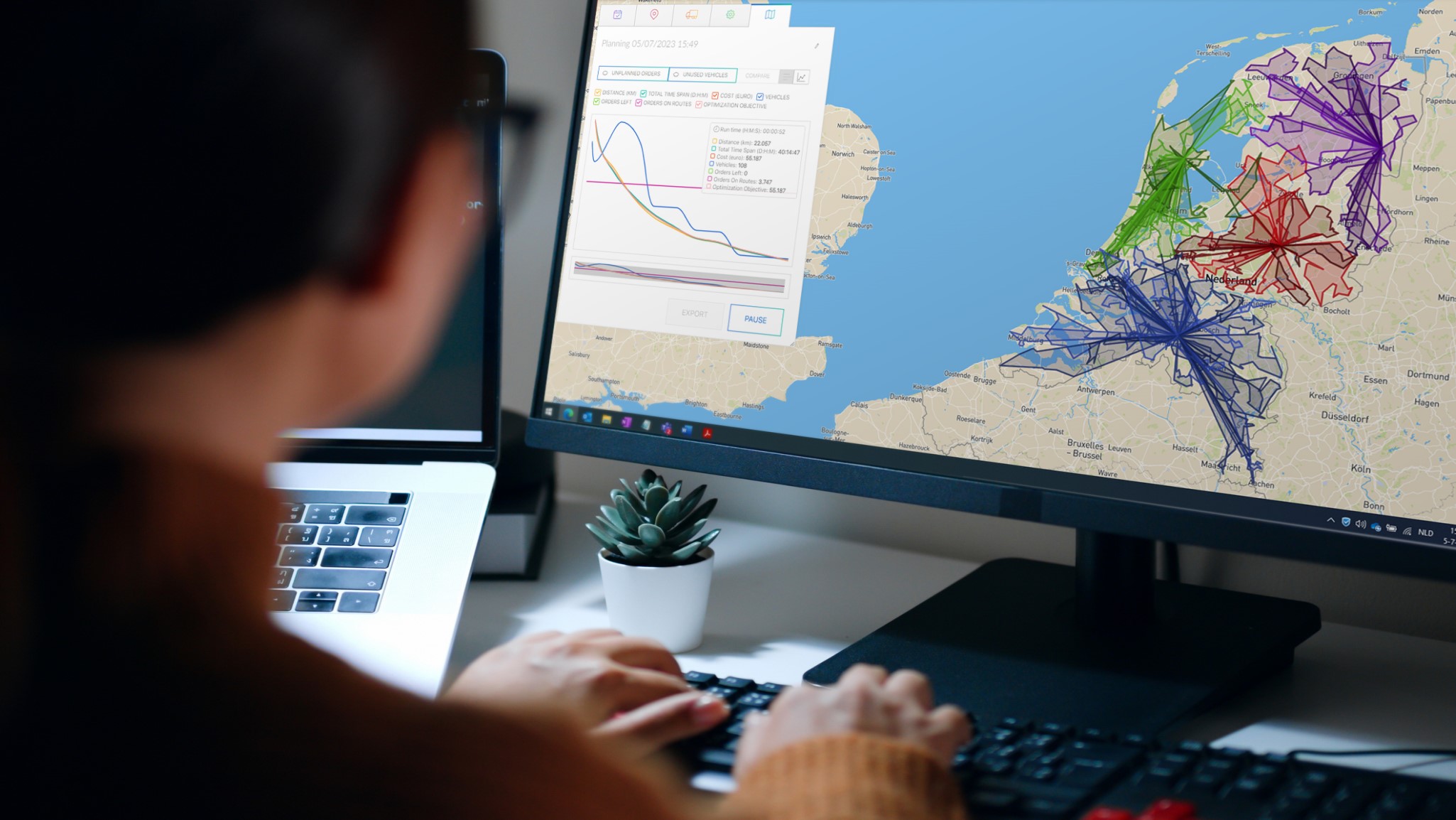From electrification; EV Truck Route Planning, to mile charges and from zero-emission zones to driver shortages: the transport world is facing major changes. This requires a route optimisation system that is constantly evolving and innovating. With a SaaS route optimisation software such as OptiFlow, carriers – partly thanks to input from users – always have access to the latest innovations. The result: even more savings.
SaaS stands for Software-as-a-Service. That means that the software is provided over the Internet as a service. All companies need is an internet connection and a browser. Because the software runs elsewhere in the cloud, investing in your own server is no longer necessary. Companies also do not have to buy licenses to own the software. They pay a fixed amount per month or year as long as they want to use the software.
The SaaS model has many advantages:
- Companies no longer have to worry about system and application management, because the SaaS supplier takes care of that.
- They no longer must worry about long calculation times, because they have virtually unlimited access to computing power via the cloud.
- They no longer have to waste time manually updating or upgrading the system because it is done automatically without users noticing.
Always the latest version

OptiFlow from PTV Logistics is a route optimisation system that has been developed from the start as a SaaS solution. OptiFlow excels especially in the route optimisation of large companies with many vehicles, many delivery addresses and/or many restrictions. The system uses advanced algorithms for this, which require a lot of computing power. Because OptiFlow runs in the cloud, the availability of computing power is not a problem.
What makes a SaaS solution like OptiFlow so valuable in this day and age is the continuous upgrades and updates the software undergoes. Because companies no longer must carry it out themselves, it no longer matters how often an upgrade or update takes place. The software supplier no longer has to save innovations for the next version but can make them immediately available to all users. In other words: the user always has the latest version of the software. That is so handy in this rapidly changing time.
Responding to changes
Take as an example the zero-emission zones that will be introduced in 2025 in the thirty to forty largest Dutch cities. As soon as it has been determined what they look like, the OptiFlow software can be adapted accordingly. Or take the CO 2 emissions for which everyone in the EU will have to pay from 2027. This requires adjustments to the route optimisation system so that planners can see the impact of this measure on transport costs.
Many more changes are coming. Think of the truck tax in the Netherlands that is to come into force in 2026. Or the Corporate Sustainability Reporting Directive that forces companies to register and report their CO2 emissions. As a result, there is a growing need for additional options for optimising route planning based on CO 2 emissions. Or the wishes of drivers, who need to be extra indulgent because of the ongoing driver shortage.

Continuous further development
The pace at which the world of transport is changing is set to increase rather than decrease in the coming years. All these changes require continuous development of the route optimisation system. Input from users is essential for this. What information are they missing now? What are the requirements and wishes of customers that they cannot meet? What support do they need to plan better, more efficiently and faster? To get answers to these and other questions, the people behind OptiFlow talk to users.
OptiFlow is a route optimisation system that offers unprecedented savings potential. Experience shows that cost savings of up to 20 percent are possible thanks to the advanced algorithms. By continuing to develop the route optimisation system based on customer input, the savings will only increase further in the future.
